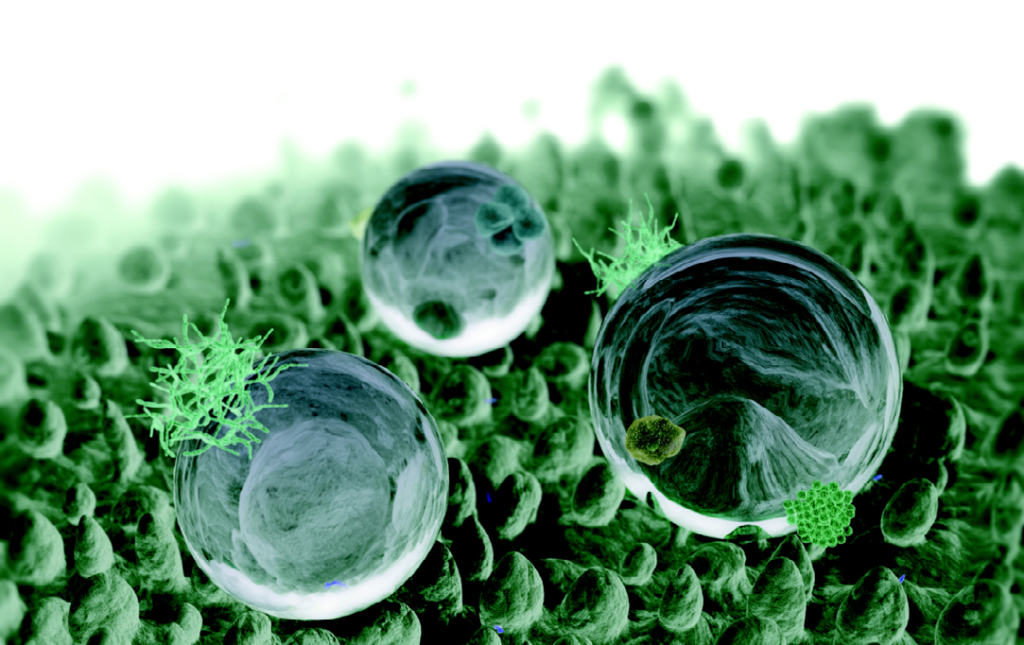Nanotechnology, also shortened to nanotech, is one of the most promising technologies of the 21st century. The emerging technology of nanotech is seen as the technology that not only holds good promises for a society, but also it is capable of revolutionizing our approaches towards common problems facing the world. By definition, the term nanotechnology refers to science, engineering, and technology conducted at a nanoscale (1 to 100 nanometre), where unique phenomena enable novel applications in a wide range of fields, from chemistry, physics and biology, to medicine, engineering and electronics. A single human hair is about 80,000 nm wide while a red blood cell is approximately 7,000 nm wide, a DNA molecule 2 to 2.5 nm wide, and a water molecule almost 0.3 nm wide.
Nanotechnology is not a completely new field; however, recent discoveries in this field have advanced so far that warrant examinations are now being considered in regards to their impacts upon the world around us. Nanotechnology has direct beneficial applications for the environment, but like all technologies it is bound to have unintended effects that can adversely impact both the human body and the natural ecosystem. While taking advantage of this new technology for our health, environment and sustainability benefits, science needs to examine its environmental and health implications.
Nanotechnological products, processes and applications are projected to contribute potentially to environmental and climate protection by saving raw materials, energy and water as well as by reducing greenhouse gases and hazardous waste. Rising prices for raw materials and energy, coupled with the increasing environmental awareness of consumers are responsible for a flood of nano products on the market that promise certain advantages for environmental and climate protection. Nanomaterials exhibit special physical and chemical properties that make them interesting for innovative and environmentally friendly products. The physical and chemical properties of nanomaterials include; increased durability of materials against mechanical stress or weathering, facilitating the increase of product life; reduce cleaning efforts from nanotechnology-based dirt and water-resistant coatings; improved energy efficiency novel insulation materials of buildings and reduce weight and energy saving during transportation.
In the chemical industry sector, nanotechnology is being applied based on its special catalytic properties in order to boost energy and resource efficiency and it is also being used as an alternative for environmentally problematic chemicals. High hopes are being placed in nanotechnologically optimized products and processes for energy production and storage. These are currently in the development phase and are scheduled to contribute significantly to climate protection and solving our energy problems in the near future.
Nowadays, nanotechnology is used to make battery recycling economically attractive. Countless batteries still contain heavy metals such as mercury, lead, cadmium, and nickel which can pollute the environment and pose a potential threat to human health if they are not disposed-off properly. Not only do the billions upon billions of batteries in landfills pose an environmental problem, they are also a complete waste of a potential and affordable raw material if recycled.
Air pollution is a potential area where nanotechnology has great promising solutions. Filtration practices similar to the water purification approaches could be used in buildings to purify indoor air volumes. Nano-filters can be applied on automobile tailpipes and factory smokestacks to filter out contaminants and prevent them from entering the atmosphere. In addition, nano-sensors could be developed to detect toxic gas leaks at extremely low concentrations.
The potential impact areas for nanotechnology in water applications are classified into treatment and remediation, sensing and detection, pollution prevention and the improvement of desalination technologies. Remediation of contaminated groundwater using nano-particles containing zero-valent iron is one of the most prominent examples of a rapidly emerging technology with considerable potential benefits. Nanotechnology-based water purification devices have the potential to transform the field of desalination through using the ion concentration polarization phenomenon. Further on, scientists are working on a nanotechnology solution for radioactive waste clean-up, precisely the use of nanofibers as absorbents for the removal of radioactive ions from water. Researchers have also reported that the unique structural properties of titanate nano-tubes and nano-fibres make them superior materials for the removal of radioactive caesium and iodine ions in water.
Artificial photosynthesis using solar energy to split water in order generate hydrogen and oxygen can offer a clean and portable source of energy supply as durable as the sunlight. It takes about 2.5 volts to break a single water molecule down into oxygen along with negatively charged electrons and positively charged protons. It is the extraction and separation of these oppositely charged electrons and protons from water molecules that provide electric power. Working on the nanoscale, researchers have shown that an inexpensive and environmentally gentle inorganic light harvesting nanocrystal array can be combined with a low-cost electro-catalyst that contains abundant elements to fabricate an inexpensive and stable system for photo-electrochemical hydrogen production.
Nanotechnology has a huge potential for providing advanced solutions towards a wide range of environmental issues. These include better methods for reducing pollution, water treatment, environmental sensing, remediation, and making alternative energy sources more cost-effective. The unique properties of engineered nano-materials allow these new technologies to meet the global environmental challenges in a sustainable way.
